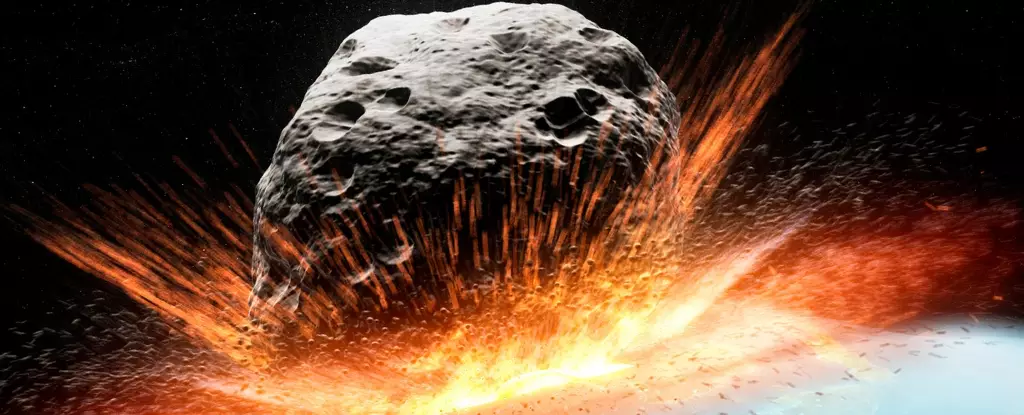In late December 2024, astronomers made a significant discovery in the vast expanse of our night sky: an asteroid designated as 2024 YR4. This asteroid earned its unique certainty in the naming process due to its timing—being the 117th asteroid identified within the month of December, it followed the naming conventions established by the International Astronomical Union (IAU). This designation reflects the ongoing efforts to catalog and monitor celestial objects that could pose a threat to Earth.
With the identification of 2024 YR4 came the immediate need for surveillance and analysis to understand its trajectory. Early observations detailed a concerning prospect: an estimated 1% chance of collision with Earth. As subsequent measurements were recorded, this percentage increased to a 2.3% probability that the asteroid would intersect Earth’s path on December 22, 2032. However, it is crucial to contextualize this data with an understanding of the uncertainties inherent in asteroid tracking.
The statistics surrounding 2024 YR4 are nuanced. An initial reading suggesting a 2.3% chance of impact does not simply equate to the conventional idea of rolling dice. Instead, it represents a statistical assessment derived from approximately 1,000 orbital simulations—23 of which predicted a catastrophic encounter with Earth. While these calculations may seem alarming at first glance, it’s important to note that many other simulations forecast a much less threatening outcome. In fact, the most probable trajectory indicates a safe close approach of 240,000 kilometers from Earth, a distance exceeding the Moon’s orbit and indicating that, while its presence is notable, it is not immediately dangerous.
Despite the metrics initially pointing to concern, 2024 YR4 currently retains a Torino Scale rating of 3. This categorization indicates that ongoing observation is crucial, but it portrays minimal alarm regarding the likelihood of impact. The Torino Scale serves as a tool for the public and scientific community alike to assess the risk levels associated with asteroids and cometary bodies.
A significant aspect of monitoring asteroids like 2024 YR4 is the inherent complexity and unpredictability in their orbits. Factors such as gravitational interactions with other celestial bodies can dramatically alter an asteroid’s trajectory, leading to early estimates that may fluctuate over time. In the instance of 2024 YR4, one critical data point is its anticipated close pass within 8 million kilometers of Earth in 2028. This close approach will provide astronomers with a unique opportunity to gather more precise data, considerably refining their predictions and enhancing the accuracy of potential impact scenarios.
The necessity of such continuous monitoring cannot be understated, as the threat landscape for asteroids varies immensely. The greater danger lies not in those like 2024 YR4 which are detected and tracked but in unforeseen threats, such as the Chelyabinsk meteor that surprised the world with its unexpected entry into Earth’s atmosphere. Maintaining vigilance and being prepared to respond to these unpredictable hazards forms the crux of our ongoing planetary defense initiatives.
Even in the event that calculations yield a near-certain meteorite strike, the situation need not escalate into panic. The preparedness framework in place for such potential incidents is far more robust than many might presume. First and foremost, awareness of an asteroid’s approach allows time for necessary interventions. If 2024 YR4 did indeed present a significant risk, plans could be developed to either evacuate areas most at risk or contemplate asteroid deflection strategies.
Importantly, 2024 YR4 is considered too small to result in a catastrophic extinction event if it were to impact Earth. Instead, the most pressing fear would involve the possibility of it striking a densely populated region, necessitating evacuation protocols. Fortunately, with the timeline extending to 2032, there would be ample opportunity for preparation should the threat level increase.
While asteroid 2024 YR4 presents an intriguing case of celestial monitoring, it exemplifies the complexities involved in assessing the risks associated with near-Earth objects. By combining ongoing research, advanced monitoring technologies, and public communication strategies, we can effectively navigate these uncertainties. As scientists predict the likelihood of converging trajectories, we can remain proactive rather than reactive. The future of asteroid tracking, without question, hinges on our ability to continuously adapt and respond to a dynamic cosmic landscape. To stay informed about 2024 YR4 and other celestial bodies, the NASA Planetary Defense Coordination Office remains an invaluable resource.

